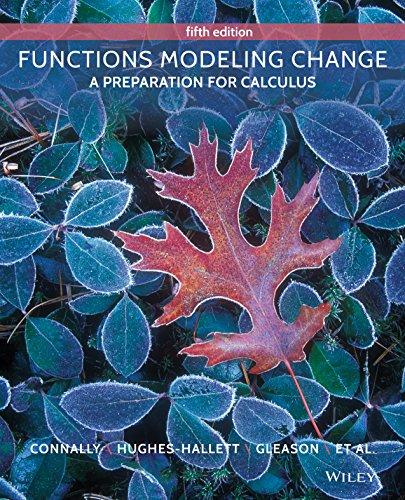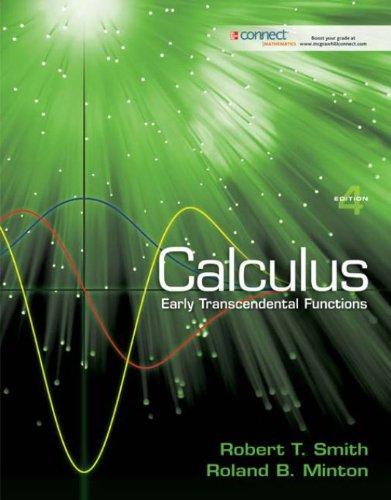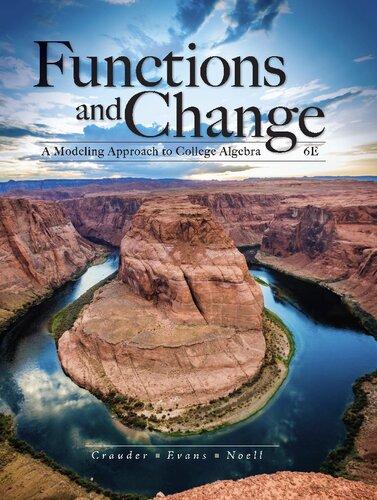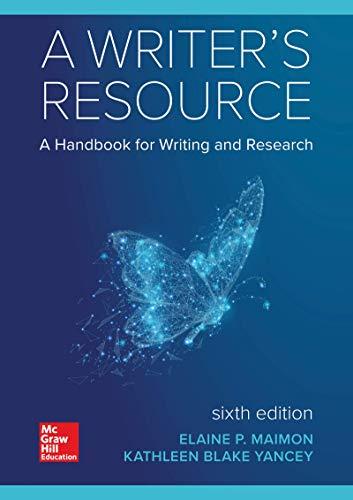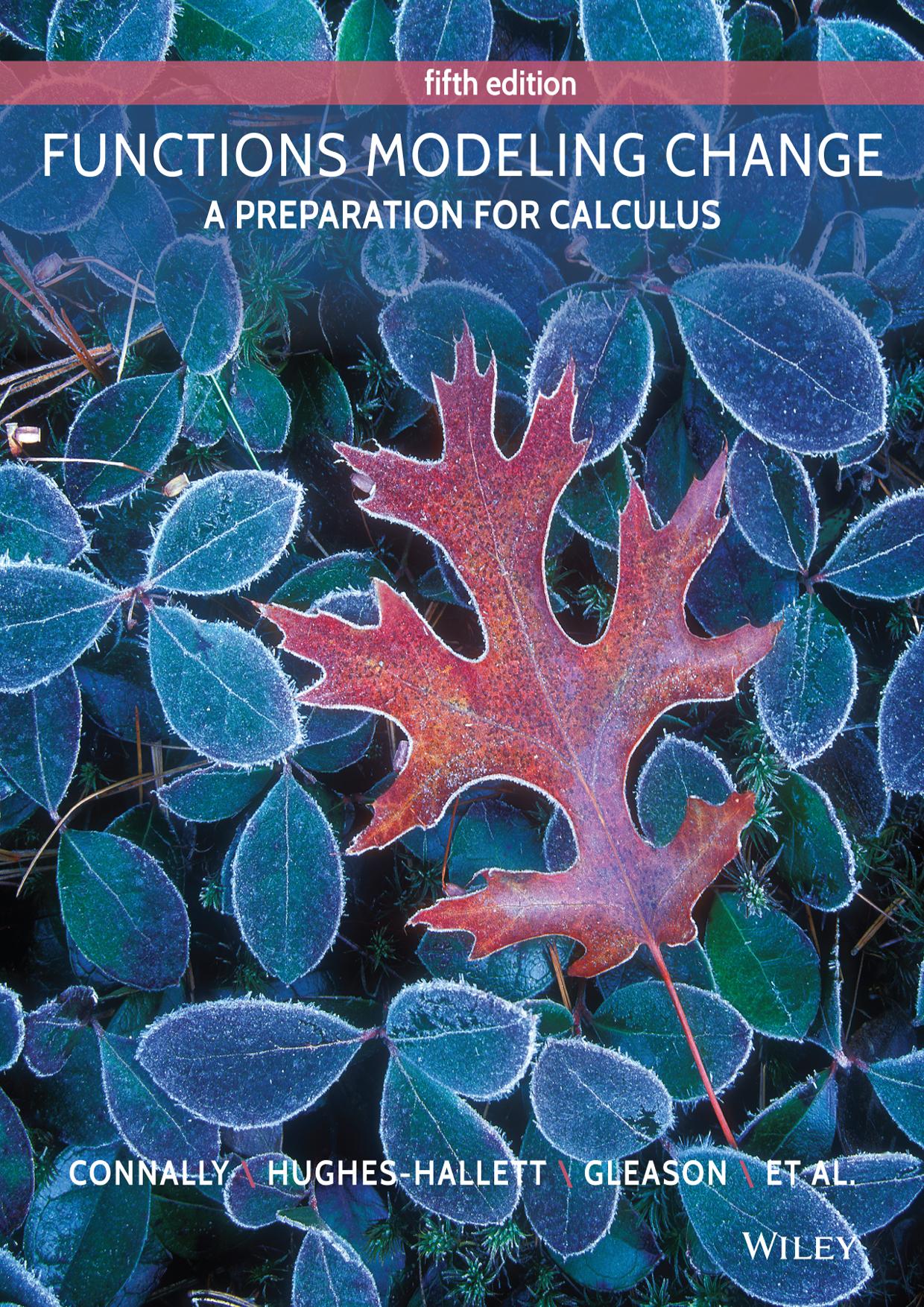You Won't Believe Me Cyn Balog
https://ebookmass.com/product/you-wont-believe-me-cyn-balog/
ebookmass.com
A Writer's Resource: A Handbook for Writing and Research 6th Edition Elaine Maimon
https://ebookmass.com/product/a-writers-resource-a-handbook-forwriting-and-research-6th-edition-elaine-maimon/ ebookmass.com
Declutter Workbook Martin Hill
https://ebookmass.com/product/declutter-workbook-martin-hill/
ebookmass.com
The Local and the Digital in Environmental Communication 1st ed. Edition Joana Díaz-Pont
https://ebookmass.com/product/the-local-and-the-digital-inenvironmental-communication-1st-ed-edition-joana-diaz-pont/
ebookmass.com
Métodos de investigación clínica y epidemiológica (Spanish Edition) Josep Maria Argimon Pallàs & Josep Jiménez Villa [Pallàs
https://ebookmass.com/product/metodos-de-investigacion-clinica-yepidemiologica-spanish-edition-josep-maria-argimon-pallas-josepjimenez-villa-pallas/
ebookmass.com
https://ebookmass.com/product/gate-2019-electrical-engineeringprevious-years-solved-question-papers-trishna-knowledge-systems/
ebookmass.com
Chapter4:ExponentialFunctions
Thischapterintroducesthefamilyofexponentialfunctionsandthenumber ��.Itcomparesexponentialand linearfunctions,solvesexponentialequationsgraphically,andgivesapplicationstocompoundinterest.
The SkillsRefresher sectionforChapter4reviewsthepropertiesofexponents.
Chapter5:LogarithmicFunctions
Thischapterintroduceslogarithmicfunctionswithbase10andbase ��,bothinordertosolveexponentialequationsandasinversesofexponentialfunctions.Afterdiscussingmanipulationswithlogarithms,thechapter focusesonmodelingwithexponentialfunctionsandlogarithms.Logarithmicscalesandasectiononlinearizingdataconcludethechapter.
The SkillsRefresher sectionforChapter5reviewsthepropertiesoflogarithms.
Chapter6:TransformationsofFunctionsandTheirGraphs
Thischapterinvestigatestransformations.Itrevisitsshifts,introducesreflectionsandstretches,andexplores evenandoddsymmetryusingtransformations.Theeffectoforderingwhencombiningtransformationsis explored.
Chapter7:TrigonometryandPeriodicFunctions
Thischapterintroducestrigonometricfunctionsinbothradiansanddegreesasmodelsforperiodicmotion. Afterexploringgraphsandformulasofsine,cosine,andtangent,generalsinusoidalfunctionsareintroduced. Thischapterintroducestheinversetrigonometricfunctionstosolvetrigonometricequations.
The SkillsRefresher sectionforChapter7reviewssineandcosinevaluesofspecialanglesmeasuredin bothradiansanddegrees.
Chapter8:TriangleTrigonometryandPolarCoordinates
Thischapterdevelopsright-triangletrigonometry,andintroducestheLawofSinesandtheLawofCosines.It alsodefinespolarcoordinates,explorestheirrelationshiptoCartesiancoordinates,andconsidersthegraphs ofpolarinequalities.
Note:Chapter8canbeskippedbyinstructorswhoprefernottoemphasizetriangletrigonometry.
Chapter9:TrigonometricIdentities,ModelsandComplexNumbers
Thischapteropenswithadiscussionoftrigonometricequations,andthenexplorestrigonometricidentities andtheirroleintrigonometricmodels,suchasdampe doscillationsandacousticbeats.Thechaptercloses withcomplexnumbers,includingEuler’sFormulaanddeMoivre’stheorem.
Chapter10:Compositions,Inverses,andCombinationsofFunctions
Thischapterdiscussescombinationsoffunctions.Itinvestigatescompositeandinversefunctions,whichwere introducedinChapter2,inmoredetail.
Chapter11:PolynomialandRationalFunctions
Thischapterdiscussespowerfunctions,polynomials,andrationalfunctions.Thechapterexploresdominance andlong-runbehaviorandconcludesbycomparing polynomialandexponentialfunctions,andbyfitting functionstodata.
The SkillsRefresher sectionforChapter11reviewsalgebraicfractions.
Chapter12:Vectors
Thischaptercontainsmaterialonvectorsandoperationsinvolvingvectors.Anintroductiontomatricesis includedinthelastsection.
Chapter13:SequencesandSeries
Thischapterintroducesarithmeticandgeometricsequencesandseriesandtheirapplications.
Chapter14:ParametricEquationsandConicSections
Theconcludingchapterlooksatparametricequations,implicitfunctions,hyperbolicfunctions,andconic sections:circles,ellipses,andhyperbolas.Thechapterincludesasectiononthegeometricalpropertiesofthe conicsectionsandtheirapplicationstoorbits. Note:Chapter14isavailableonlineonly.
SupplementaryMaterials
Thefollowingsupplementarymaterialsareavailableforthefifthedition:
• TheInstructor’sManual containsteachingtips,lessonplans,syllabi,andworksheets.Ithasbeen expandedandrevisedtoincludeworksheets,identificationoftechnology-orientedproblems,andnew syllabi.(ISBN978-1-119-01383-9)
• ThePrintedTestBank containstestquestionsarrangedbysection.
• TheInstructor’sSolutionManual hascompletesolutionstoallproblems.(ISBN978-1-118-94162-1)
• TheStudentSolutionManual hascompletesolutionstohalfoftheodd-numberedproblems.(ISBN 978-1-118-94163-8)
• TheComputerizedTestBank,availableinbothPCandMacintoshformats,allowsinstructorstocreate, customize,andprintatestcontaininganycombinationsofquestionsfromalargebankofquestions. Instructorscanalsocustomizethequestionsorcreatetheirown.
• ClassroomActivities arepostedatthebookcompanionwebsite.Theseactivitiesweredevelopedto facilitatein-classgroupworkaswellastointroducenewconceptsandtopracticeskills.Inadditionto theblankcopiesforeachactivitythatcanbehandedouttothestudents,acopyoftheactivitywithfully workedoutsolutionsisalsoavailable.
• TheBookCompanionSite atwww.wiley.com/college/connallycontainsallinstructorsupplements.
• WileyPLUS isapowerfulonlinesuiteofteachingandlearningresourcestightlyintegratedwiththetext. WileyPLUSenablesinstructorstoassign,deliverandgradeindividuallycustomizedhomeworkassignmentsusingexercisesandproblemsfromthetext.Studentsreceiveimmediatefeedbackontheirhomeworkandaccesstofullsolutionstoassignedproblemselectronically.Studentsmayalsoaccesshintsto theproblems.Inadditiontoonlinehomework,WileyPLUSprovidesstudenttutorials,aninstructorgradebook,integratedlinkstotheelectronicversionofthetext,andallofthetext’ssupplementalmaterials. Formoreinformation,visitwww.wiley.com/college/wileyplusorcontactyourlocalWileyrepresentative formoredetails.
• Mini-lectureVideos linkedwithexamplesintheWileyPLUSstudentversionofthetextprovidegreater detailtothesolutionofexamplesineachsectionofthetext.Thesemayassiststudentsinreadingthetext priortoclassorinreviewingmaterialafterclass.
• TheFacultyNetwork isapeer-to-peernetworkofacademicfacultydedicatedtotheeffectiveuseof technologyintheclassroom.Thisgroupcanhelpyouapplyinnovativeclassroomtechniques,implement specificsoftwarepackages,andtailorthetechnologyexperiencetothespecificneedsofeachindividual class.Visitwww.wherefacultyconnect.comoraskyourWileyrepresentativefordetails.
ConcepTests
ConcepTests,modeledonthepioneeringworkofHarvardphysicistEricMazur,arequestionsdesignedto promoteactivelearningduringclass,particularly(butnotexclusively)inlargelectures.Ourevaluationdata showstudentstaughtwithConcepTestsoutperformedstudentstaughtbytraditionallecturemethods 73% versus 17% onconceptualquestions,and 63% versus 54% oncomputationalproblems.ConcepTestsarrangedby
x Preface
sectionareavailableinPowerPointandClassroomResponseSystem-readyformatsfromyourWileyrepresentative.(ISBN978-1-118-94161-4)
Acknowledgments
Wewouldliketothankthemanypeoplewhomadethisbookpossible.First,wewouldliketothankthe NationalScienceFoundationfortheirtrustandtheirsupport;weareparticularlygratefultoJimLightbourne andSpudBradley.
WearealsogratefultoourAdvisoryBoardfortheirguidance:BenitaAlbert,LidaBarrett,SimonBernau, RobertDavis,LoveniaDeconge-Watson,JohnDossey,RonaldDouglas,EliFromm,BillHaver,DonLewis, SeymourParter,JohnPrados,andStephenRodi.
WorkingwithLaurieRosatone,AnneScanlan-Rohrer,KenSantor,ShannonCorliss,JoannaDingle, KimberlyKanakes,JacquelineSinacori,CourtneyWalsh,andMadelynLesureatJohnWileyisapleasure. Weappreciatetheirpatienceandimagination.
Manypeoplehavecontributedsignificantlytothistext.Theyinclude:LaurenAkers,FahdAlshammari, DavidArias,TimBean,CharlotteBonner,BillBossert,BrianBradie,NoahS.Brannen,MikeBrilleslyper, DonnaBrouillette,MatthewM.Campbell,JoCannon,RayCannon,KennyChing,AnnaChung,PierreCressant,MarciaCrump,LaurieDelitsky,BobDobrow,HelenM.Doerr,IanDowker,CarolynEdmond,Maryann Faller,AidanFlanagan,BrendanFry,BradGarner, CarrieGarner,JohnGerke,ChristieGilliland,Wynne Guy,DonnieHallstone,DavidHalstead,LarryHenly,DeanHickerson,JoEllenHillyer,BobHoburg,Phil Hotchkiss,MikeHuffman,MacHyman,RajiniJesudason,LorenJohnson,DavidJones,ScottKaplowitch, NazaninKarimi,ThomasKershaw,MaryKilbride,SteveKinholt,KandaceKling,AngelaKubena,Rob LaQuaglia,BarbaraLeasher,KennethLemp,RichardLittle,DavidLovelock,GuadalupeLozanoTerán, NicholasLyktey,ChaimaaMakoudi,LenMalinowski,NancyMarcus,KateMcGivney,GowriMeda,Bob Megginson,DeborahMoore,EricMotylinski,BillMueller,MichaelNakamaye,KyleNiedzwiecki,Karina Nielsen,KathrynOswald,IgorPadure,BridgetNealeParis,JanetRay,RitamRay,KenRichardson,Halip Saifi,SharonSanders,MarySchumacher,MikeSeer y,MikeSherman,DonnaSherrill,MaxShuchman,Fred Shure,KanwalSingh,MyraSnell,ReginaSouza,NatashaSpeer,SonyaStanley,MichaelSteuer,JimStone, PeggyTibbs,JeffTaft,EliasToubassi,JerryUhl,PatWagener,BenjaminWest,DaleWinter,TimothyWisecarver,andXianbaoXu.
Reportsfromthefollowingreviewersweremosthelpfulinshapingthesecond,third,fourth,andfiftheditions:VictorAkatsa,JeffreyAnderson,BethBorel,LindaBraddy,MichaelBrassington,IngridBrown-Scott, LindaCasper,KimChudnick,TedCoe,RayCollings,JoeCoyle,PamCrawford,MarciaCrump,Monica Davis,LaurieDelitsky,PhyllisDesormeaux,HelenDoerr,DianeDownie,PeterDragnev,PatriciaDueck, JulieFisher,JenniferFowler,AlyneFulte,DavidGillette,JackGreen,ZdenkaGuadarrama,DonnieHallstone,JeffHoherz,MajidHosseini,RickHough,AnnHumes,BryanIngham,MaryLouJumonville,Pallavi Ketkar,WilliamKiele,MileKrajcevski,JohnLaMaster,RichardLane,DebbieLee,PhyllisLeonard,Daphne MacLean,DianeMathios,KristaMaxson,MichaelMcAfee,VinceMcGarry,MariaMiles,LauraMooreMueller,EllenMusen,DaveNolan,LindaO’Brien,ChrisParks,ScottPerry,JeffreyS.Powell,AnnePraderas, MichaelPrice,MaryRack,GregoryRhoads,JoeRody,EmilyRoth,JohnSawka,AmyN.Schachle,Barbara ShabellDeirdreSmith,ErnieSolheid,ReginaP.Souza,SandySpears,DianaStaats,JonathanStadler,Mary JaneSterling,DennisStramiello,DebbieStrance,AllisonSutton,JohnThomason,DianeVanNostrand,Jim Vicich,LindaWagner,NicoleWilliams,JimWinston,VauhnWittman-Grahler,BruceYoshiwara,FangZhao, andXinyunZhu.SpecialthanksareowedtoFayeRiddleforadministeringtheprojectandtoAlexKasman forhissoftwaresupport.
EricConnallyDeborahHughes-HallettAndrewM.GleasonPhilipCheifetz AnnDavidianDanFlath SelinKalaycıoğluBrigitteLahme PattiFrazerLockGuadalupeI.LozanoElliotJ.MarksWilliamG.McCallum JerryMorrisKarenRhea EllenSchmiererPatShure AdamH.SpieglerCarlSwenson AaronD.Wootton
ToStudents:HowtoLearnfromthisBook
•Thisbookmaybedifferentfromothermathtextbooksthatyouhaveused,soitmaybehelpfultoknowabout someofthedifferencesinadvance.Ateverystage,thisbookemphasizesthe meaning (inpractical,graphical ornumericalterms)ofthesymbolsyouareusing.Thereismuchlessemphasison“plug-and-chug”andusing formulas,andmuchmoreemphasisontheinterpretationoftheseformulasthanyoumayexpect.Youwilloften beaskedtoexplainyourideasinwordsortoexplainananswerusinggraphs.
•ThebookcontainsthemainideasofprecalculusinplainEnglish.Successinusingthisbookwilldependon reading,questioning,andthinkinghardabouttheideaspresented.Itwillbehelpfultoreadthetextindetail, notjusttheworkedexamples.
•Therearefewexamplesinthetextthatareexactlylikethehomeworkproblems,sohomeworkproblemscan’t bedonebysearchingforsimilar-looking“workedout”examples.Successwiththehomeworkwillcomeby grapplingwiththeideasofprecalculus.
•Manyoftheproblemsinthebookareopen-ended.Thismeansthatthereismorethanonecorrectapproach andmorethanonecorrectsolution.Sometimes,solvingaproblemreliesoncommon-senseideasthatarenot statedintheproblemexplicitlybutwhichyouknowfromeverydaylife.
•Thisbookassumesthatyouhaveaccesstoacalculatororcomputerthatcangraphfunctionsandfind(approximate)rootsofequations.Therearemanysituationswhereyoumaynotbeabletofindanexactsolutiontoa problem,butcanuseacalculatororcomputertogetareasonableapproximation.Ananswerobtainedthisway canbeasusefulasanexactone.However,theproblemdoesnotalwaysstatethatacalculatorisrequired,so useyourownjudgment.
•Thisbookattemptstogiveequalweighttofourmethodsfordescribingfunctions:graphical(apicture),numerical(atableofvalues),algebraic(aformula)andverbal(words).Sometimesit’seasiertotranslateaproblem giveninoneformintoanother.Forexample,youmightreplacethegraphofaparabolawithitsequation,or plotatableofvaluestoseeitsbehavior.Itisimportanttobeflexibleaboutyourapproach:ifonewayoflooking ataproblemdoesn’twork,tryanother.
•Studentsusingthisbookhavefounddiscussingtheseproblemsinsmallgroupshelpful.Thereareagreatmany problemsthatarenotcut-and-dried;itcanhelptoattackthemwiththeotherperspectivesyourcolleagues canprovide.Ifgroupworkisnotfeasible,seeifyourinstructorcanorganizeadiscussionsessioninwhich additionalproblemscanbeworkedon.
•Youareprobablywonderingwhatyou’llgetfromthebook.Theansweris,ifyouputinasolideffort,youwill getarealunderstandingoffunctionsaswellasarealsenseofhowmathematicsisusedintheageoftechnology.
TableofContents
1LINEARFUNCTIONSANDCHANGE
1.1FUNCTIONSANDFUNCTIONNOTATION2
1.2RATEOFCHANGE10
1.3LINEARFUNCTIONS18
1.4FORMULASFORLINEARFUNCTIONS27
1.5MODELINGWITHLINEARFUNCTIONS37
1.6FITTINGLINEARFUNCTIONSTODATA46
REVIEWPROBLEMS52
STRENGTHENYOURUNDERSTANDING60
SKILLSREFRESHERFORCHAPTERONE:LINEAREQUATIONS62
2FUNCTIONS
2.1INPUTANDOUTPUT70
2.2DOMAINANDRANGE78
2.3PIECEWISE-DEFINEDFUNCTIONS84
2.4PREVIEWOFTRANSFORMATIONS:SHIFTS90
2.5PREVIEWOFCOMPOSITEANDINVERSEFUNCTIONS97
2.6CONCAVITY104
REVIEWPROBLEMS109
STRENGTHENYOURUNDERSTANDING113
3QUADRATICFUNCTIONS
3.1INTRODUCTIONTOTHEFAMILYOFQUADRATICFUNCTIONS116
3.2THEVERTEXOFAPARABOLA122
REVIEWPROBLEMS129
STRENGTHENYOURUNDERSTANDING130
SKILLSREFRESHERFORCHAPTER3131
SKILLSFORFACTORING131
COMPLETINGTHESQUARE136
4EXPONENTIALFUNCTIONS
4.1INTRODUCTIONTOTHEFAMILYOFEXPONENTIALFUNCTIONS140
4.2COMPARINGEXPONENTIALANDLINEARFUNCTIONS149
4.3GRAPHSOFEXPONENTIALFUNCTIONS157
4.4APPLICATIONSTOCOMPOUNDINTEREST165
4.5THENUMBER �� 168
REVIEWPROBLEMS176
STRENGTHENYOURUNDERSTANDING182
SKILLSREFRESHERFORCHAPTER4:EXPONENTS183
5LOGARITHMICFUNCTIONS
5.1LOGARITHMSANDTHEIRPROPERTIES188
5.2LOGARITHMSANDEXPONENTIALMODELS195
5.3THELOGARITHMICFUNCTIONANDITSAPPLICATIONS203
5.4LOGARITHMICSCALES214
REVIEWPROBLEMS225
STRENGTHENYOURUNDERSTANDING228
SKILLSREFRESHERFORCHAPTER5:LOGARITHMS229
6TRANSFORMATIONSOFFUNCTIONSANDTHEIRGRAPHS
6.1SHIFTS,REFLECTIONS,ANDSYMMETRY234
6.2VERTICALSTRETCHESANDCOMPRESSIONS243
6.3HORIZONTALSTRETCHESANDCOMBINATIONSOFTRANSFORMATIONS250
REVIEWPROBLEMS259
STRENGTHENYOURUNDERSTANDING263
7TRIGONOMETRYANDPERIODICFUNCTIONS
7.1INTRODUCTIONTOPERIODICFUNCTIONS266
7.2THESINEANDCOSINEFUNCTIONS272
7.3RADIANSANDARCLENGTH279
7.4GRAPHSOFTHESINEANDCOSINE286
7.5SINUSOIDALFUNCTIONS293
7.6THETANGENTFUNCTION301
7.7TRIGONOMETRICRELATIONSHIPSANDIDENTITIES304
7.8INVERSETRIGONOMETRICFUNCTIONS310
REVIEWPROBLEMS315
STRENGTHENYOURUNDERSTANDING319
SKILLSREFRESHERFORCHAPTER7:SPECIALANGLES322
8TRIANGLETRIGONOMETRYANDPOLARCOORDINATES
8.1TRIGFUNCTIONSANDRIGHTTRIANGLES328
8.2NON-RIGHTTRIANGLES335
8.3POLARCOORDINATES342
REVIEWPROBLEMS350
STRENGTHENYOURUNDERSTANDING352
9TRIGONOMETRICIDENTITIES,MODELS,ANDCOMPLEXNUMBERS
9.1TRIGONOMETRICEQUATIONS354
9.2IDENTITIES,EXPRESSIONS,ANDEQUATIONS358
9.3SUMANDDIFFERENCEFORMULASFORSINEANDCOSINE365
9.4TRIGONOMETRICMODELSANDSUMIDENTITIES369
9.5SUMSWITHDIFFERENTPERIODSANDACCOUSTICBEATS381
9.6COMPLEXNUMBERSANDDEMOIVRE’STHEOREM385
REVIEWPROBLEMS393
STRENGTHENYOURUNDERSTANDING396
10COMPOSITIONS,INVERSES,ANDCOMBINATIONSOFFUNCTIONS
10.1COMPOSITIONOFFUNCTIONS398
10.2INVERTIBILITYANDPROPERTIESOFINVERSEFUNCTIONS404
10.3COMBINATIONSOFFUNCTIONS414
REVIEWPROBLEMS424
STRENGTHENYOURUNDERSTANDING430
11POLYNOMIALANDRATIONALFUNCTIONS
11.1POWERFUNCTIONSANDPROPORTIONALITY432
11.2POLYNOMIALFUNCTIONS443
11.3THESHORT-RUNBEHAVIOROFPOLYNOMIALS451
11.4RATIONALFUNCTIONS457
11.5THESHORT-RUNBEHAVIOROFRATIONALFUNCTIONS464
11.6COMPARINGPOWER,EXPONENTIAL,ANDLOGFUNCTIONS471
11.7FITTINGEXPONENTIALSANDPOLYNOMIALSTODATA476
REVIEWPROBLEMS484
STRENGTHENYOURUNDERSTANDING489
SKILLSREFRESHERFORCHAPTER11:ALGEBRAICFRACTIONS491
12VECTORSANDMATRICES
12.1VECTORS496
12.2THECOMPONENTSOFAVECTOR503
12.3APPLICATIONSOFVECTORS510
12.4THEDOTPRODUCT516
12.5MATRICES522
REVIEWPROBLEMS531
STRENGTHENYOURUNDERSTANDING534
13SEQUENCESANDSERIES
13.1SEQUENCES536
13.2DEFININGFUNCTIONSUSINGSUMS:ARITHMETICSERIES541
13.3FINITEGEOMETRICSERIES548
13.4INFINITEGEOMETRICSERIES553
REVIEWPROBLEMS559
STRENGTHENYOURUNDERSTANDING561
14PARAMETRICEQUATIONSANDCONICSECTIONS(OnlineOnly)
14.1PARAMETRICEQUATIONS14-2
14.2IMPLICITLYDEFINEDCURVESANDCIRCLES14-11
14.3ELLIPSES14-15
14.4HYPERBOLAS14-18
14.5GEOMETRICPROPERTIESOFCONICSECTIONS14-22
14.6HYPERBOLICFUNCTIONS14-36
REVIEWPROBLEMS14-40
STRENGTHENYOURUNDERSTANDING14-41
LINEAR FUNCTIONS AND CHANGE
1.1 FUNCTIONSANDFUNCTIONNOTATION
Ineverydaylanguage,theword function expressesthenotionofdependence.Forexample,aperson mightsaythatelectionresultsareafunctionoftheeconomy,meaningthatthewinnerofanelection isdeterminedbyhowtheeconomyisdoing.Someoneelsemightclaimthatcarsalesareafunction oftheweather,meaningthatthenumberofcarssoldonagivendayisaffectedbytheweather.
Inmathematics,themeaningoftheword function ismoreprecise,butthebasicideaisthe same.Afunctionisarelationshipbetweentwoquantities.Ifthevalueofthefirstquantitydetermines exactlyonevalueofthesecondquantity,wesaythesecondquantityisafunctionofthefirst.We makethefollowingdefinition:
A function isarulethattakescertainnumbersasinputsandassignstoeachinputnumber exactlyoneoutputnumber.Theoutputisafunctionoftheinput.
Theinputsandoutputsarealsocalled variables
RepresentingFunctions:Words,Tables,Graphs,andFormulas
Afunctioncanbedescribedusingwords,datainatable,pointsonagraph,oraformula.
Example1 Itisasurprisingbiologicalfactthatmostcricketschirpataratethatincreasesasthetemperature increases.Forthesnowytreecricket(Oecanthusfultoni),therelationshipbetweentemperatureand chirprateissoreliablethatthistypeofcricketiscalledthethermometercricket.Wecanestimate thetemperature(indegreesFahrenheit)bycountingthenumberoftimesasnowytreecricketchirps in 15 secondsandadding40.Forinstance,ifwecount20chirpsin15seconds,thenagoodestimate ofthetemperatureis 20+40=60◦ F.1
Theruleusedtofindthetemperature �� (in ◦ F)fromthechirprate �� (inchirpsperminute)isan exampleofafunction.Theinputischirprateandtheoutputistemperature.Describethisfunction usingwords,atable,agraph,andaformula.
Solution
• Words:Toestimatethetemperature,wecountthenumberofchirpsinfifteensecondsandadd forty.Alternatively,wecancount �� chirpsperminute,divide �� byfourandaddforty.Thisis becausethereareone-fourthasmanychirpsinfifteensecondsasthereareinsixtyseconds. Forinstance, 80 chirpsperminuteworksoutto 1 4 80=20 chirpsevery 15 seconds,givingan estimatedtemperatureof 20+40=60◦ F.
• Table:Table1.1givestheestimatedtemperature, �� ,asafunctionof ��,thenumberofchirps perminute.NoticethepatterninTable1.1:eachtimethechirprate, ��,goesupby 20 chirpsper minute,thetemperature, �� ,goesupby 5◦ F.
Table1.1 Chirprateandtemperature ��,chirprate �� ,predicted (chirps/minute)
◦ F)
=(80, 60) ��,chirprate (chirps/min) �� (◦ F)
Figure1.1: Chirprateandtemperature
1 ThisrelationshipisoftencalledDolbear’sLaw,asitwasfirstproposedinAmosDolbear,"TheCricketasaThermometer," in TheAmericanNaturalist, 31(1897),pp.970–971.
1.1FUNCTIONSANDFUNCTIONNOTATION 3
• Graph:ThedatafromTable1.1areplottedinFigure1.1.Forinstance,thepairofvalues �� =80, �� =60 isplottedasthepoint �� ,whichis 80 unitsalongthehorizontalaxisand 60 unitsup theverticalaxis.Datarepresentedinthiswayaresaidtobeplottedonthe Cartesianplane.The precisepositionof �� isshownbyitscoordinates,written �� =(80 , 60)
• Formula:Aformulaisanequationgiving �� intermsof ��.Dividingthechirpratebyfourand addingfortygivestheestimatedtemperature,so:
Estimatedtemperature(in ◦ F)
⏟⏞⏞⏞⏞⏞⏞⏞⏞⏞⏞⏞⏞⏞⏞⏞⏞⏞⏞⏞⏞⏟⏞⏞⏞⏞⏞⏞⏞⏞⏞⏞⏞⏞⏞⏞⏞⏞⏞⏞⏞⏞⏟ �� = 1 4 Chirprate(inchirps/min)
⏟⏞⏞⏞⏞⏞⏞⏞⏞⏞⏞⏞⏞⏞⏞⏞⏞⏟⏞⏞⏞⏞⏞⏞⏞⏞⏞⏞⏞⏞⏞⏞⏞⏞⏟ �� +40
Rewritingthisusingthevariables �� and �� givestheformula: �� = 1 4 �� +40
Let’schecktheformula.Substituting �� =80,wehave �� = 1 4 80+40=60 , whichagreeswithpoint �� =(80 , 60) inFigure1.1.Theformula �� = 1 4 �� +40 alsotellsusthat if �� =0,then �� =40.Thus,thedashedlineinFigure1.1crosses(orintersects)the �� -axisat �� =40;wesaythe �� -intercept is 40
AllthedescriptionsgiveninExample1providethesameinformation,buteachdescriptionhas adifferentemphasis.Arelationshipbetweenvariablesisoftengiveninwords,asatthebeginning ofExample1.Table1.1isusefulbecauseitshowsthe predictedtemperatureforvariouschirprates. Figure1.1ismoresuggestiveofatrendthanthetable,althoughitishardertoreadexactvaluesof thefunction.Forexample,youmighthavenoticedthateverypointinFigure1.1fallsonastraight linethatslopesupfromlefttoright.Ingeneral,a graphcanrevealapatternthatmightotherwise gounnoticed.Finally,theformulahastheadvantageofbeingbothcompactandprecise.However, thiscompactnesscanalsobeadisadvantagesinceitmaybehardertogainasmuchinsightfroma formulaasfromatableoragraph.
MathematicalModels
Whenweuseafunctiontodescribeanactualsituation,thefunctionisreferredtoasa mathematical model.Theformula �� = 1 4 �� +40 isamathematicalmodeloftherelationshipbetweenthetemperatureandthecricket’schirprate.Suchmodelscanbepowerfultoolsforunderstandingphenomena andmakingpredictions.Forexample,thismodelpredictsthatwhenthechirprateis80chirpsper minute,thetemperatureis 60◦ F.Inaddition,since �� =40 when �� =0,themodelpredictsthatthe chirprateis 0 at 40◦ F.Whetherthemodel’spredictionsareaccurateforchirpratesdownto 0 and temperaturesaslowas 40◦ Fisaquestionthatmathematicsalonecannotanswer;anunderstanding ofthebiologyofcricketsisneeded.However,wecansafelysaythatthemodeldoesnotapplyfor temperaturesbelow 40◦ F,becausethechirpratewouldthenbenegative.Fortherangeofchirprates andtemperaturesinTable1.1,themodelisremarkablyaccurate.
Ineverydaylanguage,sayingthat �� isafunctionof �� suggeststhatmakingthecricketchirp fasterwouldsomehowmakethetemperaturechange.Clearly,thecricket’schirpingdoesnotcause thetemperaturetobewhatitis.Inmathematics,sayingthatthetemperature“depends”onthechirp ratemeansonlythatknowingthechirprateissufficienttotellusthetemperature.
ChapterOneLINEARFUNCTIONSANDCHANGE
FunctionNotation
Toindicatethataquantity �� isafunctionofaquantity ��,weabbreviate �� isafunctionof �� to �� equals“�� of ��” and,usingfunctionnotation,to �� = �� (��)
Thus,applyingtherule �� totheinputvalue, ��,givestheoutputvalue, �� (��),whichisavalueof �� Here �� iscalledthe dependentvariable and �� iscalledthe independentvariable.Inotherwords, Output = �� (Input) or
Dependent = �� (Independent)
Wecouldhaveusedanyletter,notjust �� ,torepresenttherule.
Theexpressions“�� dependson ��”or“�� isafunctionof ��”do not implyacause-and-effect relationship,asthesnowytreecricketexampleillustrates.
Example2 Example1givesthefollowingformulaforestimatingairtemperature, �� ,basedonthechirprate, ��, ofthesnowytreecricket: �� = 1 4 �� +40
Inthisformula, �� dependson ��.Writing �� = �� (��) indicatesthattherelationshipisafunction.
Example3 Thenumberofgallonsofpaintneededtopaintahousedependsonthesizeofthehouse.Agallon ofpainttypicallycovers 250 squarefeet.Thus,thenumberofgallonsofpaint, ��,isafunctionofthe areatobepainted, �� ft2 .Wewrite �� = �� (�� )
(a)Findaformulafor ��
(b)Explaininwordswhatthestatement �� (10 ,000)=40 tellsusaboutpaintinghouses.
Solution (a)If �� =250,thehouserequiresonegallonofpaint.If �� =500,itrequires 500∕250=2 gallons ofpaint,if �� =750 itrequires 750∕250=3 gallonsofpaint,andsoon.Weseethatahouseof area �� requires �� ∕250 gallonsofpaint,so �� and �� arerelatedbytheformula
�� = �� (�� )= �� 250 .
(b)Theinputofthefunction �� = �� (�� ) isanareaandtheoutputisanamountofpaint.Thestatement �� (10 ,000)=40 tellsusthatanareaof �� =10 ,000 ft2 requires �� =40 gallonsofpaint.
FunctionsDon’tHavetoBeDefinedbyFormulas
Peoplesometimesthinkthatfunctionsarealwaysrepresentedbyformulas.However,otherrepresentations,suchastablesorgraphs,canbeuseful.
Example4
Theaveragemonthlyrainfall, ��,atChicago’sO’HareairportisgiveninTable1.2,wheretime, ��,is inmonthsand �� =1 isJanuary, �� =2 isFebruary,andsoon.Therainfallisafunctionofthemonth, sowewrite �� = �� (��).However,thereisnoformulathatgives �� when �� isknown.Evaluate �� (1) and �� (11).Explainwhatyouranswersmean.
Table1.2 AveragemonthlyrainfallatChicago’sO’Hareairport
Solution Thevalueof �� (1) istheaveragerainfallininchesatChicago’sO’HareairportinatypicalJanuary. Fromthetable, �� (1)=1 8 inches.Similarly, �� (11)=2 4 meansthatinatypicalNovember,there are2.4inchesofrainatO’Hare.
WhenIsaRelationshipNotaFunction?
Itispossiblefortwoquantitiestoberelatedandyetforneitherquantitytobeafunctionoftheother.
Example5
Anationalparkcontainsfoxesthatpreyonrabbits.Table1.3givesthetwopopulations, �� and ��, overa12-monthperiod,where �� =0 meansJanuary1, �� =1 meansFebruary1,andsoon.
Table1.3 Numberoffoxesandrabbitsinanationalpark,bymonth ��,month 01234567891011 ��,rabbits 1000750567500567750100012501433150014331250 �� ,foxes 1501431251007557505775100125143
(a)Is �� afunctionof ��?Is �� afunctionof ��?
(b)Is �� afunctionof ��?Is �� afunctionof �� ?
Solution (a)Rememberthatforarelationshiptobeafunction,aninputcanonlygiveasingleoutput.Both �� and �� arefunctionsof ��.Foreachvalueof ��,thereisexactlyonevalueof �� andexactlyone valueof ��.Forexample,Table1.3showsthatif �� =5,then �� =750 and �� =57.Thismeans thatonJune1thereare 750 rabbitsand 57 foxesinthepark.Ifwewrite �� = �� (��) and �� = �� (��), then �� (5)=750 and �� (5)=57
(b)No, �� isnotafunctionof ��.Forexample,suppose �� =750,meaningthereare 750 rabbits. Thishappensbothat �� =1 (February1)andat �� =5 (June1).Inthefirstinstance,thereare 143 foxes;inthesecondinstance,thereare 57 foxes.Sincethereare ��-valueswhichcorrespondto morethanone �� -value, �� isnotafunctionof �� Similarly, �� isnotafunctionof �� Attime �� =5,wehave �� =750 when �� =57,while attime �� =7,wehave �� =1250 when �� =57 again.Thus,thevalueof �� doesnotuniquely determinethevalueof ��.
HowtoTellifaGraphRepresentsaFunction:VerticalLineTest
Whatdoesitmeangraphicallyfor �� tobeafunctionof ��?Lookatagraphof �� against ��,with �� on theverticalaxisand �� onthehorizontalaxis.Forafunction,each ��-valuecorrespondstoexactly one ��-value.Thismeansthatthegraphintersectsany verticallineatmostonce(eitheronceornotat all).Ifaverticallinecutsthegraphtwice,thegraphcontainstwopointswithdifferent ��-valuesbut thesame ��-value;thisviolatesthedefinitionofafunction.Thus,wehavethefollowingcriterion:
VerticalLineTest:Ifthereisaverticallinethatintersectsagraphinmorethanonepoint, thenthegraphdoesnotrepresentafunction.
Example6 InwhichofthegraphsinFigures1.2and1.3could �� beafunctionof ��?
150) �� ��
50)
Figure1.2: Sincenoverticallineintersectsthiscurveat morethanonepoint, �� couldbeafunctionof ��
Figure1.3: Sinceoneverticallineintersectsthiscurve atmorethanonepoint, �� isnotafunctionof ��
ChapterOneLINEARFUNCTIONSANDCHANGE
Solution ThegraphinFigure1.2couldrepresent �� asafunctionof �� becausenoverticallineintersectsthis curveinmorethanonepoint.ThegraphinFigure1.3doesnotrepresentafunctionbecausethe verticallineshownintersectsthecurveattwopoints.
Agraphfailstheverticallinetestifatleastoneverticallinecutsthegraphmorethanonce,as inFigure1.3.However,ifagraphrepresentsafunction,then every verticallinemustintersectthe graphatnomorethanonepoint.
ExercisesandProblemsforSection1.1
SkillRefresher
InExercisesS1–S4,simplifyeachexpression.
S1. �� + 1 2 �� S2. �� +0 07�� +0 02��
S3.
InExercisesS5–S8,findthevalueoftheexpressionsforthe givenvalueof �� and ��
S5. �� −5�� for �� = 1 2 , �� =−5
S6. 1−12�� + ��2 for �� =3
S7. 3 2− ��3 for �� =−1 S8. 4 1+1∕�� for �� =− 3 4
Exercises
InExercises1–2,writetherelationshipusingfunctionnotation (thatis, �� isafunctionof �� iswritten �� = �� (��)).
1. Numberofmolecules, ��,inagas,isafunctionofthe volumeofthegas, ��
2. Weight, ��,isafunctionofcaloricintake, �� .
InExercises3–6,labeltheaxesforasketchtoillustratethe givenstatement.
3. “Overthepastcenturywehaveseenchangesinthepopulation, �� (inmillions),ofthecity...”
4. “Sketchagraphofthecostofmanufacturing �� items...”
5. “Graphthepressure, �� ,ofagasasafunctionofitsvolume, ��,where �� isinpoundspersquareinchand �� isin cubicinches.”
6. “Graph �� intermsof ��...”
7. Figure1.4givesthedepthofthewateratMontaukPoint, NewYork,foradayinNovember.
(a) Howmanyhightidestookplaceonthisday?
(b) Howmanylowtidestookplaceonthisday?
(c) Howmuchtimeelapsedinbetweenhightides?
ThefiguresinExercisesS9–S10areparallelograms.Findthe coordinatesofthepoint ��
depthofwater(feet)
4812162024 time(hours)
Figure1.4
8. UsingTable1.4,graph �� = �� (�� ),thenumberofgallons ofpaintneededtocoverwallsofarea �� .Identifytheindependentanddependentvariables.
Table1.4
9. UseFigure1.5tofillinthemissingvalues: (a) �� (0)=? (b) �� (?)=0
15.(a) Youaregoingtograph �� = �� (��).Whichvariable goesonthehorizontalaxis?
(b) If 10= �� (−4),givethecoordinatesofapointonthe graphof ��
(c) If 6 isasolutionoftheequation �� (��)=1,givea pointonthegraphof ��
Figure1.5
10. UseTable1.5tofillinthemissingvalues.(Theremaybe morethanoneanswer.)
(a) �� (0)=? (b) �� (?)=0 (c) �� (1)=? (d) �� (?)=1
Table1.5
Exercises11–14useFigure1.6.
Figure1.6
11. Find �� (6 9)
12. Givethecoordinatesoftwopointsonthegraphof ��
13. Solve �� (��)=0 for �� 14. Solve �� (��)= �� (��) for ��
26. Attheendofasemester,students’mathgradesarelisted inatablewhichgiveseachstudent’sIDnumberintheleft columnandthestudent’sgradeintherightcolumn.Let �� representtheIDnumberand �� representthegrade. Whichquantity, �� or �� ,mustnecessarilybeafunction oftheother?
27. Aperson’sbloodsugarlevelataparticulartimeofthe dayispartiallydeterminedbythetimeofthemostrecent meal.Afterameal,bloodsugarlevelincreasesrapidly, thenslowlycomesbackdowntoanormallevel.Sketcha person’sbloodsugarlevelasafunctionoftimeoverthe
InExercises16–19arelationshipisgivenbetweentwoquantities.Arebothquantitiesfunctionsoftheotherone,orisone orneitherafunctionoftheother?Explain.
19. Thenumberofgallonsofgas, �� ,at$3pergallonandthe numberofpoundsofcoffee, �� ,at$10perpoundthatcan beboughtforatotalof$100.
InExercises20–25,couldthegraphrepresent �� asafunction of ��?
courseofaday.Labeltheaxestoindicatenormalblood sugarlevelandthetimeofeachmeal.
28. Whenaparachutistjumpsoutofaplane,thespeedofher fallincreasesuntilsheopensherparachute,atwhichtime herfallingspeedsuddenlydecreasesandstaysconstant untilshereachestheground.Sketchapossiblegraphof theheight �� oftheparachutistasafunctionoftime ��, fromthetimewhenshejumpsfromtheplanetothetime whenshereachestheground.
29. Abuzzardiscirclinghighoverheadwhenitspiessome roadkill.Itswoopsdown,lands,andeats.Laterittakes
ChapterOneLINEARFUNCTIONSANDCHANGE
offsluggishly,andresumescirclingoverhead,butata loweraltitude.Sketchapossiblegraphoftheheightof thebuzzardasafunctionoftime.
30. Table1.6givestheranking �� forthreedifferentnames— Hannah,Alexis,andMadison.Ofthethreenames,which wasmostpopularandwhichwasleastpopularin (a)1995? (b)2004?
Table1.6 Rankingofnames—Hannah( ��ℎ ),Alexis(���� ),andMadison (���� )—forgirlsbornbetween1995(�� =0)and 2004 (�� =9)2
(d) Starts10milesfromhomeandishalfwayhomeafter onehour.
(e) Starts5milesfromhomeandis10milesfromhome afteronehour.
31. Table1.6givesinformationaboutthepopularityofthe namesHannah,Madison,andAlexis.Describeinwords whatyouranswerstoparts(a)–(c)tellyouaboutthese names.
(a) Evaluate ���� (0)− ��ℎ (0)
(b) Evaluate ���� (9)− ��ℎ (9)
(c) Solve ���� (��) <���� (��)
32. Figure1.7showsthefuelconsumption(inmilespergallon,mpg)ofacartravelingatvariousspeeds(inmph).
(a) Howmuchgasisusedona300-miletripat40mph?
(b) Howmuchgasissavedbytraveling60mphinstead of70mphona200-miletrip?
(c) Accordingtothisgraph,whatisthemostfuelefficientspeedtotravel?Explain.
34. Figure1.8showsthemassofwaterinair,ingramsof waterperkilogramofair,asafunctionofairtemperature in ◦ C,fortwodifferentlevelsofrelativehumidity.
(a) Findthemassofwaterin1kgofairat 30◦ Cifthe relativehumidityis
(a)100% (b)50% (c)75%
(b) Howmuchwaterisinaroomcontaining300kgof airiftherelativehumidityis50%andthetemperatureis20◦ C?
(c) Thedensityofairisapproximately 1 2 kg/m 3 Ifthe relativehumidityinyourclassroomis50%andthe temperatureis20◦ C,estimatetheamountofwaterin theair.
amountofwater(ing)in1kgofair
33. Matcheachstoryaboutabikeridetooneofthegraphs (i)–(v),where �� representsdistancefromhomeand �� is timeinhourssincethestartoftheride.(Agraphmaybe usedmorethanonce.)
(a) Starts5milesfromhomeandrides5milesperhour awayfromhome.
(b) Starts5milesfromhomeandrides10milesperhour awayfromhome.
(c) Starts10milesfromhomeandarriveshomeonehour later.
2 DatafromtheSSAwebsiteatwww.ssa.gov,accessedJanuary12,2006.
Figure1.7
Figure1.8
35. Let �� (��) bethenumberofpeople,inmillions,whoown cellphones �� yearsafter1990.Explainthemeaningofthe followingstatements.
(a) �� (10)=100 3 (b) �� (�� )=20
(c) �� (20)= �� (d) �� = �� (��)
36.(a) Teninchesofsnowisequivalenttoaboutoneinch ofrain.3 Writeanequationfortheamountofprecipitation,measuredininchesofrain, �� = �� (��),asa functionofthenumberofinchesofsnow, ��
(b) Evaluateandinterpret �� (5)
(c) Find �� suchthat �� (��)=5 andinterpretyourresult.
37. An8-foot-tallcylindricalwatertankhasabaseofdiameter6feet.
(a) Howmuchwatercanthetankhold?
(b) Howmuchwaterisinthetankifthewateris5feet deep?
(c) Writeaformulaforthevolumeofwaterasafunction ofitsdepthinthetank.
38. Table1.7gives �� = �� (�� ),theamountofmoneyinbills ofdenomination �� circulatinginUScurrencyin2013.4 Forexample,therewere$74.5billionworth of$50bills incirculation.
(a) Find �� (100).Whatdoesthistellyouaboutmoney?
(b) Aretheremore$1billsor$5billsincirculation?
Table1.7
Denomination($) 1 2 5 10 20 50 100
Circulation($bn) 10 6 2 1 12 7 18 5 155 0 74 5 924 7
39. Table1.8showsthedailylowtemperatureforaone-week periodinNewYorkCityduringJuly.
(a) WhatwasthelowtemperatureonJuly19?
(b) Whenwasthelowtemperature73◦ F?
(c) Isthedailylowtemperatureafunctionofthedate?
(d) Isthedateafunctionofthedailylowtemperature?
Table1.8
Date 17 18 19 20 21 22 23
40. UsethedatafromTable1.3onpage5.
(a) Plot �� ontheverticalaxisand �� onthehorizontal axis.Usethisgraphtoexplainwhyyoubelievethat �� isafunctionof ��
(b) Plot �� ontheverticalaxisand �� onthehorizontal axis.Usethisgraphtoexplainwhyyoubelievethat �� isafunctionof ��
(c) Plot �� ontheverticalaxisand �� onthehorizontal axis.Fromthisgraphshowthat �� isnotafunction of ��.
(d) Plot �� ontheverticalaxisand �� onthehorizontal axis.Fromthisgraphshowthat �� isnotafunction of �� .
41. SinceRogerBannisterbrokethe4-minutemileonMay 6,1954,therecordhasbeenloweredbyoversixteenseconds.Table1.9showstheyearandtimes(asmin:sec)of newworldrecordsfortheone-milerun.5 (Officialrecords forthemileendedin1999.)
(a) Isthetimeafunctionoftheyear?Explain. (b) Istheyearafunctionofthetime?Explain. (c) Let ��(��) betheyearinwhichtheworldrecord, ��,was set.Explainwhatismeantbythestatement ��(3∶47.33)=1981.
(d) Evaluateandinterpret ��(3∶51.1).
Table1.9
1981 3:48.40 1957 3:57.2 1975 3:51.0 1981 3:47.33 1958 3:54.5 1975 3:49.4 1985 3:46.32 1962 3:54.4 1979 3:49.0 1993 3:44.39 1964
42. Thesalestaxonanitemis6%.Expressthetotalcost, �� , intermsofthepriceoftheitem, �� .
43. Apriceincreases 5% duetoinflationandisthenreduced 10% forasale.Expressthefinalpriceasafunctionofthe originalprice, ��
44. Writeaformulafortheareaofacircleasafunctionof itsradiusanddeterminethepercentincreaseinthearea iftheradiusisincreasedby 10%
45. Thereare �� malejob-applicantsatacertaincompanyand �� femaleapplicants.Supposethat 15% ofthemenareacceptedand 18% ofthewomenareaccepted.Writeanexpressionintermsof �� and �� representingeachofthefollowingquantities:
(a) Thetotalnumberofapplicantstothecompany.
(b) Thetotalnumberofapplicantsaccepted.
(c) Thepercentageofallapplicantsaccepted.
3 http://mo.water.usgs.gov/outreach/rain,accessedMay7,2006.
4 http://www.federalreserve.gov/paymentsystems/coin_currcircvalue.htm,accessedFebruary16,2014.
5 www.infoplease.com/ipsa/A0112924.html,accessedJanuary15,2006.
ChapterOneLINEARFUNCTIONSANDCHANGE
46. Achemicalcompanyspends$2milliontobuymachinerybeforeitstartsproducingchemicals.Thenitspends $0 5 milliononrawmaterialsforeachmillionlitersof chemicalproduced.
(a) Thenumberoflitersproducedrangesfrom0to5 million.Makeatableshowingtherelationshipbetweenthenumberofmillionlitersproduced, �� ,and thetotalcost, �� ,inmillionsofdollars,toproduce thatnumberofmillionliters.
(b) Findaformulathatexpresses �� asafunctionof ��
1.2 RATEOFCHANGE
47. Apersonleaveshomeandwalksduewestforatimeand thenwalksduenorth.
(a) Thepersonwalks10milesintotal.If �� represents the(variable)distancewestshewalks,and �� representsher(variable)distancefromhomeattheendof herwalk,is �� afunctionof ��?Whyorwhynot?
(b) Supposenowthat �� isthedistancethatshewalksin total.Is �� afunctionof ��?Whyorwhynot?
Theworldwideannualsalesofsmartphoneshaveincreasedeachyearfromwhentheywerefirst introduced.Tomeasurehowfastsalesincrease,wecalculatea rateofchange innumberofunits sold
Changeinunitssold Changeintime
Duetotherisingpopularityofsmartphones,annualsalesofregularcellphones,or featurephones, havebeendeclining.SeeTable1.10.
Letuscalculatetherateofchangeofsmartphoneandfeaturephonesalesbetween2010and 2013.Table1.10gives
Averagerateofchangeof smartphonesalesfrom 2010 to 2013 = Changeinsales Changeintime = 968−301 2013−2010 ≈222 3 mn/ year.
Thus,thenumberofsmartphonessoldhasincreasedonaverageby 222 3 millionunitsperyear between 2010 and 2013.SeeFigure1.9.Similarly,Table1.10gives
Averagerateofchangeoffeaturephone salesfrom 2010 to 2013 = Changeinsales Changeintime = 838−1079 2013−2010 ≈−80 3 mn/ year.
Thus,thenumberoffeaturephonessoldhasdecreasedonaverageby 80 .3 millionunitsperyear between2010and2013.SeeFigure1.10.
Table1.10 Worldwideannualsalesofsmartphonesandfeaturephones6
Figure1.9: Smartphonesales
Figure1.10: Featurephonesales 6 AccessedFeb.142014,www.fiercewireless.com/europe/story/gartner-smartphones-outsell-feature-phones-2013/201402-13andwww.fiercewireless.com/europe/special-reports/analyzing-worlds-14-biggest-handset-makers-q2-2013
1.2RATEOFCHANGE 11
RateofChangeofaFunction
Therateofchangeofsalesisanexampleoftherateofchangeofafunction.Ingeneral,if �� = �� (��), wewrite �� forachangein �� and �� forachangein ��.Wedefine:7
The averagerateofchange,or rateofchange,of �� withrespectto �� overanintervalis
Averagerateofchange overaninterval = Changein �� Changein �� =
Theaveragerateofchangeofthefunction �� = �� (��) overanintervaltellsushowmuch �� changes,onaverage,foreachunitchangein �� withinthatinterval.Onsomepartsoftheinterval, �� maybechangingrapidly,whileonotherparts �� maybechangingslowly.Theaveragerateofchange evensoutthesevariations.
IncreasingandDecreasingFunctions
Inthepreviousexample,theaveragerateofchangeofsmartphonesalesispositiveontheinterval from2010to2013sincethenumberofsmartphonessoldincreasedoverthisinterval.Similarly,the averagerateofchangeoffeaturephonesalesisnegativeonthesameintervalsincethenumberof featurephonessolddecreasedoverthisinterval.Theannualsalesofsmartphonesisanexampleof an increasingfunction andtheannualsalesoffeaturephonesisanexampleofa decreasingfunction Ingeneralwesaythefollowing:
If �� = �� (��) for �� intheinterval �� ≤ �� ≤ ��,
• �� isan increasingfunction ifthevaluesof �� increaseas �� increasesinthisinterval.
• �� isa decreasingfunction ifthevaluesof �� decreaseas �� increasesinthisinterval.
Lookingatsmartphonesales,weseethatanincreasingfunctionhasapositiverateofchange. Fromthefeaturephonesales,weseethatadecreasingfunctionhasanegativerateofchange.In general:
If �� = �� (��),
•If �� isanincreasingfunction,thentheaveragerateofchangeof �� withrespectto �� is positiveoneveryinterval.
•If �� isadecreasingfunction,thentheaveragerateofchangeof �� withrespectto �� is negativeoneveryinterval.
Example1 Thefunction �� = �� (��)= ����2 givesthearea, �� ,ofacircleasafunctionofitsradius, ��.Graph �� . Explainhowthefactthat �� isanincreasingfunctioncanbeseenonthegraph.
Solution Theareaincreasesastheradiusincreases,so �� = �� (��) isanincreasingfunction.Wecanseethisin Figure1.11becausethegraphclimbsaswemovefromlefttorightandtheaveragerateofchange, Δ�� ∕Δ��,ispositiveoneveryinterval.
7 TheGreekletter Δ,delta,isoftenusedinmathematicstorepresentchange.Inthisbook,weuserateofchangetomean averagerateofchangeacrossaninterval.Incalculus,rateofchangemeanssomethingcalledinstantaneousrateofchange.
ChapterOneLINEARFUNCTIONSANDCHANGE
Highervalue of �� resultsin highervalue of ��
Lowervalue of �� resultsin lowervalue of ��
Example2
Solution
Figure1.11: Thegraphofanincreasingfunction, �� = �� (��),riseswhenreadfromlefttoright
Carbon-14isaradioactiveelementthatexistsnaturallyintheatmosphereandisabsorbedbyliving organisms.Whenanorganismdies,thecarbon-14presentatdeathbeginstodecay.Let �� = �� (��) representthequantityofcarbon-14(inmicrograms, �� g)inatree �� yearsafteritsdeath.SeeTable1.11. Explainwhyweexpect �� tobeadecreasingfunctionof �� andhowthegraphdisplaysthis.
Table1.11 Quantityofcarbon-14asafunctionoftime
,time(years)
��,quantityofcarbon-14(�� g) 200 177 157 139 123 109
Sincetheamountofcarbon-14isdecayingovertime, �� isadecreasingfunction.InFigure1.12,the graphfallsaswemovefromlefttorightandtheaveragerateofchangeinthelevelofcarbon-14 withrespecttotime, Δ��∕Δ��,isnegativeoneveryinterval.
,carbon-14( �� g)
Lowervalueof �� results inhighervalueof ��
Highervalueof �� results inlowervalueof ��
,time(years)
Figure1.12: Thegraphofadecreasingfunction, �� = �� (��),fallswhenreadfromlefttoright
Ingeneral,wecanidentifyanincreasingordecreasingfunctionfromitsgraphasfollows:
•Thegraphofanincreasingfunctionriseswhenreadfromlefttoright.
•Thegraphofadecreasingfunctionfallswhenreadfromlefttoright.
Manyfunctionshavesomeintervalsonwhichtheyareincreasingandotherintervalsonwhich theyaredecreasing.Theseintervalscanoftenbeidentifiedfromthegraph.
Example3 OnwhatintervalsisthefunctiongraphedinFigure1.13increasing?Decreasing?
Solution
Figure1.13: Graphofafunctionthatisincreasingonsomeintervalsanddecreasingonothers
Thefunctionappearstobeincreasingforvaluesof �� between −3 and −2,for �� between 0 and 1, andfor �� between 2 and 3.Thefunctionappearstobedecreasingfor �� between −2 and 0 andfor �� between 1 and 2.Usinginequalities,wesaythat �� isincreasingfor −3 <��< −2,for 0 <��< 1, andfor 2 <��< 3.Similarly, �� isdecreasingfor −2 <��< 0 and 1 <��< 2
FunctionNotationfortheAverageRateofChange
Supposewewanttofindtheaveragerateofchangeofafunction ��
Onthisinterval,thechangein �� isgivenby
overtheinterval
At �� = ��,thevalueof �� is �� (��),andat �� = ��,thevalueof �� is �� (��).Therefore,thechangein �� is givenby
Usingfunctionnotation,weexpresstheaveragerateofchangeasfollows:
Averagerateofchangeof
overtheinterval
InFigure1.14,noticethattheaveragerateofchangeisgivenbytheratiooftherise, �� (��)− �� (��), totherun, �� ��.Thisratioisalsocalledthe slope ofthedashedlinesegment.8 Inthefuture,wemaydroptheword“average”andtalkabouttherateofchangeoveraninterval.
Averagerateofchange = Slope
Figure1.14: TheaveragerateofchangeistheratioRise/Run 8 SeeSection1.3forfurtherdiscussionofslope.
ChapterOneLINEARFUNCTIONSANDCHANGE
Example4
Inpreviousexampleswecalculatedtheaveragerateofchangefromdata.Wenowcalculate averageratesofchangeforfunctionsgivenbyformulas.
Calculatetheaverageratesofchangeofthefunction �� (��)= �� 2 between �� =1 and �� =3 and between �� =−2 and �� =1.Showyourresultsonagraph.
Solution Between �� =1 and �� =3,wehave
Averagerateofchangeof �� (��) overtheinterval 1 ≤ �� ≤ 3 = Changein �� (��)
Changein �� = �� (3)− �� (1) 3−1 = 32 −12 3−1 = 9−1 2 =4
Between �� =−2 and �� =1,wehave
Averagerateofchangeof �� (��) overtheinterval −2 ≤ �� ≤ 1 = Changein �� (��)
Changein �� = �� (1)− �� (−2) 1−(−2) = 12 −(−2)2 1−(−2) = 1−4 3 =−1
Theaveragerateofchangebetween �� =1 and �� =3 ispositivebecause �� (��) isincreasingon thisinterval.SeeFigure1.15.However,ontheintervalfrom �� =−2 and �� =1,thefunctionispartly decreasingandpartlyincreasing.Theaveragerate ofchangeonthisintervalisnegativebecausethe decreaseontheintervalislargerthantheincrease.
(−2, 4) (1, 1) (3, 9) �� (��)= ��2
Slope =−1 ✛ Slope =4 ��
Figure1.15: Averagerateofchangeof �� (��) onanintervalistheslopeofthedashedlineonthatinterval
ExercisesandProblemsforSection1.2
SkillRefresher
InExercisesS1–S10,simplifyeachexpression.
S1. 4−6 3−2
S2. 1−3 22 −(−3)2
S3. −3−(−9) −1−2 S4. (1−32 )−(1−42 ) 3−4
S5. 1 2 −(−4)2 ( 1 2 −(52 )) −4−5
S6. 2(�� + �� )−3(�� ��)
S7. ��2 −(2�� + �� )2
S8. 4��2 −(�� ��)2
S9. ��2 3 4 (��2 3 4 ) �� ��
S10. 2(�� + ℎ)2 −2��2 (�� + ℎ)− ��
Exercises
InExercises1–4,onwhatintervalsisthefunctionincreasing? Decreasing?
9. Figure1.16showsdistancetraveledasafunctionoftime.
(a) Find �� and �� between: (i) �� =2 and �� =5 (ii) �� =0 5 and �� =2 5 (iii) �� =1 5 and �� =3
(b) Computetherateofchange, Δ�� ∕Δ��,overeachof theintervalsinpart(a),andinterpretitsmeaning.
5. Table1.10onpage10givestheannualsales(inmillions) ofsmartphonesandfeaturephones.Whatwastheaverage rateofchangeofannualsalesofeachofthembetween (a)2010and2012? (b)2012and2013? (c)Interprettheseresultsintermsofsales.
6. Table1.10onpage10showsthatfeaturephonesalesare afunctionofsmartphonesales.Isthisfunctionincreasing ordecreasing?
7. In2007,youhave40songsinyourfavoriteiTunes playlist.In2010,youhave120songs.In2014,youhave 40.WhatistheaveragerateofchangeperyearinthenumberofsongsinyourfavoriteiTunesplaylistbetween (a)2007and2010? (b)2010and2014? (c)2007and2014?
8. Table1.12givesthepopulationsoftwocities(inthousands)overa 17-yearperiod.
(a) Findtheaveragerateofchangeofeachpopulation onthefollowingintervals: (i)1996to2006(ii)1996to2013 (iii)2001to2013
(b) Whatdoyounoticeabouttheaveragerateofchange ofeachpopulation?Explainwhattheaveragerateof changetellsyouabouteachpopulation.
Table1.12
Figure1.16
Exercises10–14useFigure1.17.
Figure1.17
10. Findtheaveragerateofchangeof �� for 2.2 ≤ �� ≤ 6.1.
11. Givetwodifferentintervalsonwhich Δ�� (��)∕Δ�� =0
12. Whatistheaveragerateofchangeof �� between �� =2 2 and �� =6 1?
13. Whatistherelationbetweentheaveragerateofchange of �� andtheaveragerateofchangeof �� between �� =2 2 and �� =6 1?
14. Istherateofchangeof �� positiveornegativeonthefollowingintervals?
(a) 2 2 ≤ �� ≤ 4 (b) 5 ≤ �� ≤ 6
15. If �� isadecreasingfunction,whatcanyousayabout �� (−2) comparedto �� (2)?
16. If �� isanincreasingfunction,whatcanyousayabout �� (3)− �� (−1)?
ChapterOneLINEARFUNCTIONSANDCHANGE
Problems
17. Figure1.18showsthepercentofthesideofthemoontowardtheearthilluminatedbythesunatdifferenttimes duringtheyear2008.Usethefiguretoanswerthefollowingquestions.
(a) Givethecoordinatesofthepoints ��, �� , �� , �� , ��
(b) Plotthepoint �� =(15, 60) and �� =(60, 15).Which pointisonthegraph?
(c) Duringwhichtimeintervalsisthefunctionincreasing?
(d) Duringwhichtimeintervalsisthefunctiondecreasing?
% offaceofmoon
: Moonphases
18. Figure1.19givesthepopulationoftwodifferenttowns overa 50-yearperiodoftime.
(a) Whichtownstarts(inyear �� =0)withthemostpeople?
(b) Whichtownisgrowingfasteroverthese 50 years?
19.(a) Whatistheaveragerateofchangeof �� (��)=2�� −3 betweenthepoints (−2, −7) and (3, 3)?
(b) Thefunction �� iseitherincreasingordecreasingeverywhere.Explainhowyouranswertopart(a)tells youwhich.
(c) Graphthefunction.
20.(a) Let �� (��)=16− ��2 .Computeeachofthefollowing expressions,andinterpreteachasanaveragerateof change.
(i) �� (2)− �� (0) 2−0 (ii) �� (4)− �� (2) 4−2 (iii) �� (4)− �� (0) 4−0
(b) Graph �� (��).Illustrateeachratioinpart(a)bysketchingthelinesegmentwiththegivenslope.Over whichintervalistheaveragerateofdecreasethe greatest?
21. Imagineyouconstructedalistoftheworldrecordtimes foraparticularevent—suchasthemilefootrace,orthe 100-meterfreestyleswimmingrace—intermsofwhen theywereestablished.Istheworldrecordtimeafunction ofthedatewhenitwasestablished?Ifso,isthisfunction increasingordecreasing?Explain.Couldaworldrecord beestablishedtwiceinthesameyear?Istheworldrecord timeafunctionoftheyearitwasestablished?
22. Thefunction �� = �� (��) givesthepopulationofatown, inthousands,after �� years.Agraphof �� isgiveninFigure1.20.
(a) Findtheaveragerateofchangeofthepopulationof thetownduringthefirst 10 years.
(b) Doesthepopulationofthetowngrowmorebetween �� =5 and �� =10 years,orbetween �� =15 and �� =30 years?Explain.
(c) Doesthepopulationofthetowngrowfasterbetween �� =5 and �� =10 years,orbetween �� =15 and �� =30 years?Explain.
Figure1.18

